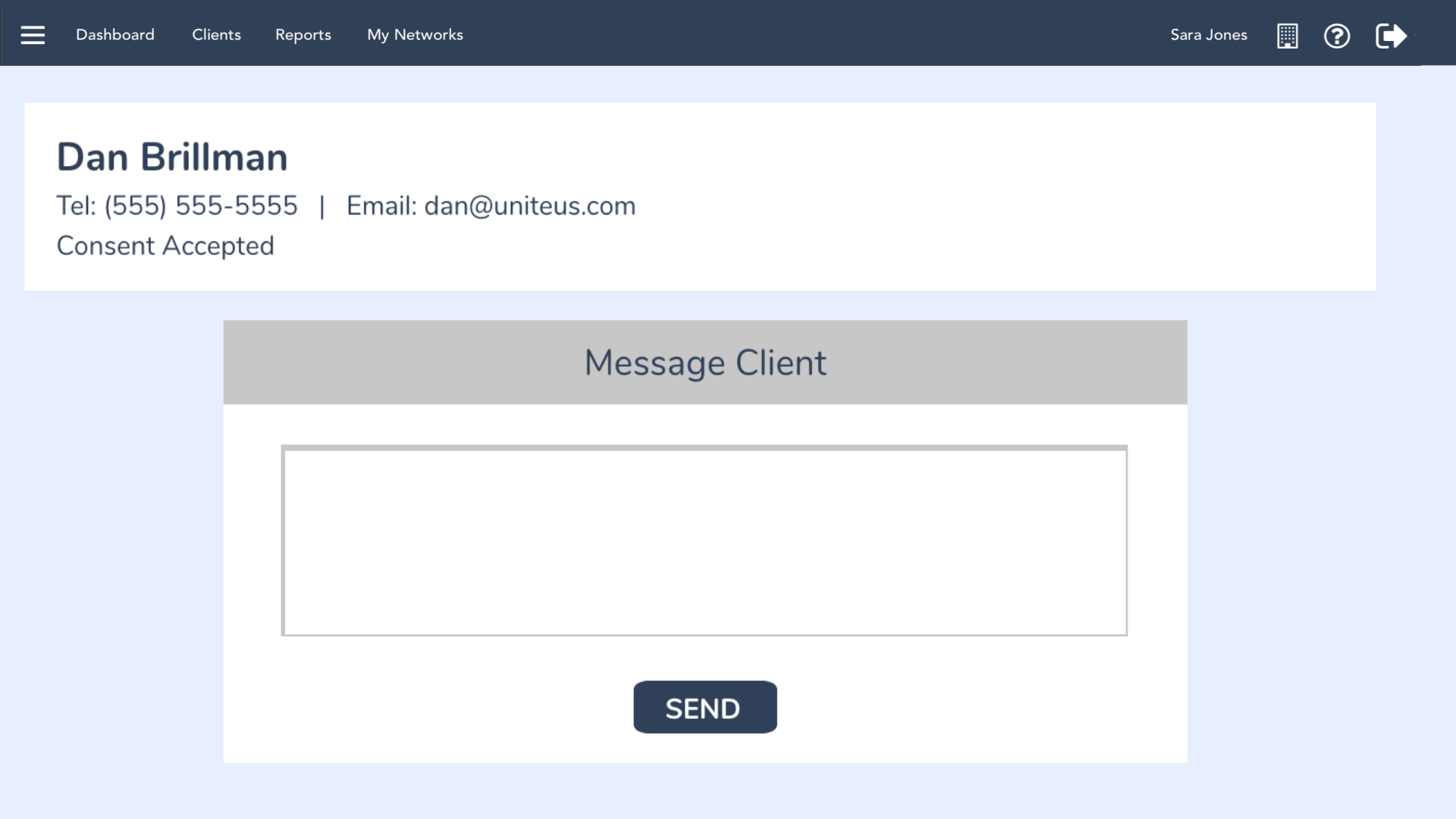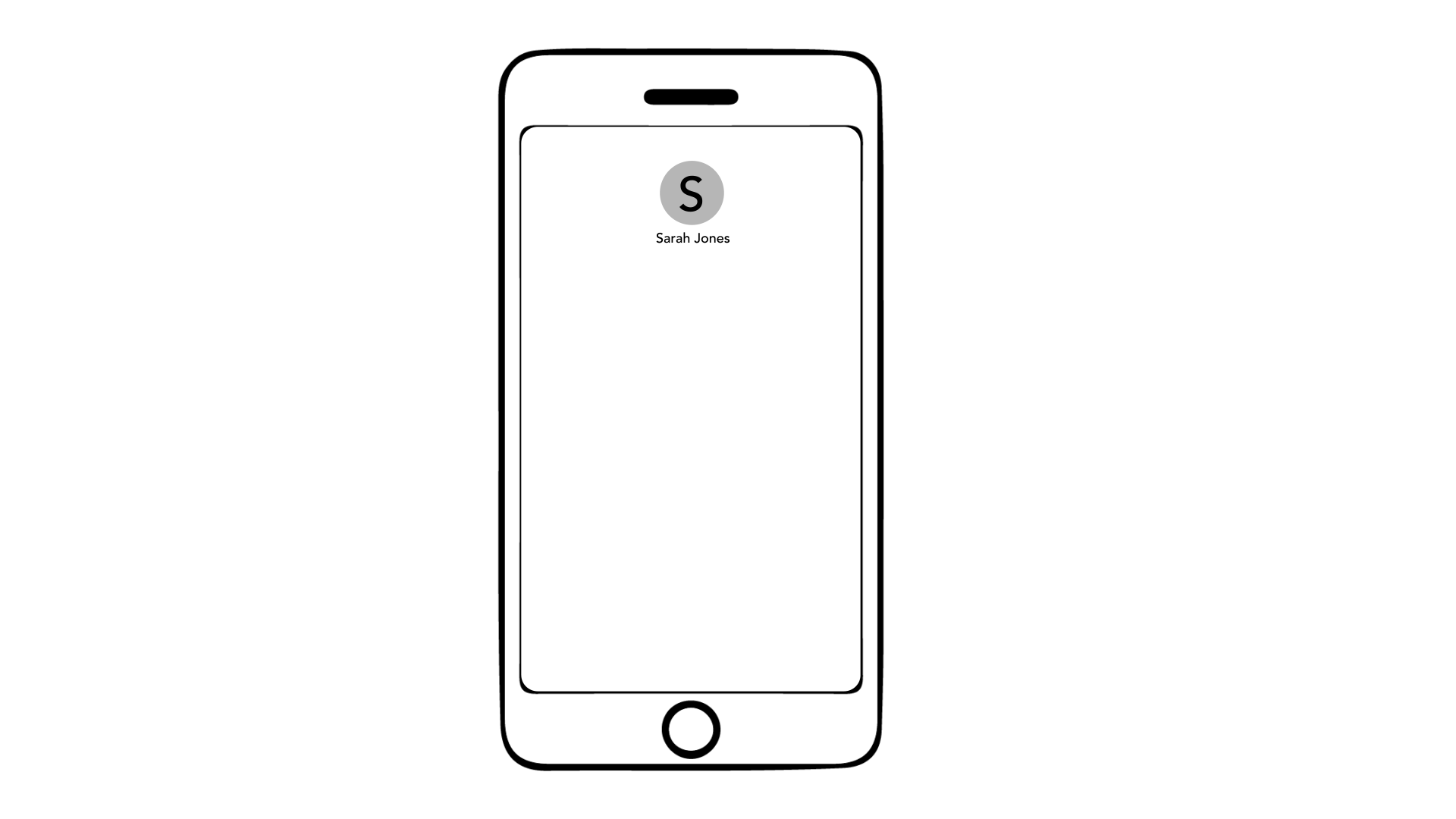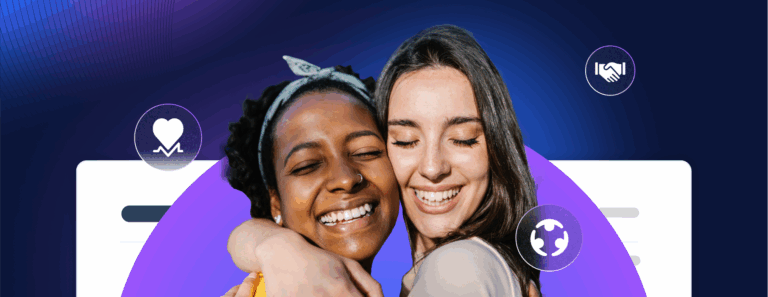
Messaging: Bridging the Patient-Provider Gap
Ally Pratt
The term “patient engagement” has many definitions, but at its core, refers to patient-provider collaboration that enables a patient’s participation in their own care. To us, it’s crucial for this collaboration to be transparent, trustworthy, and in real-time in order to be truly effective.
What is the messaging feature set?
The Unite Us software equips our users – health and human service providers – with the ability to send messages to their patients or clients.

Network partnerscan send messages directly to their clients.
After evaluating common use cases, we broke this functionality down into three general message types:
- A direct message – allowing our users to instantly communicate with a client. Users send direct messages for things like appointment reminders, a request for additional information, or any other prompt for further action from their client.
- A provider information message – enabling our users to share detailed contact, location, and eligibility information about other service providers with their clients, so clients are fully aware of where they’re being referred.
- An automatic notification – triggered to the client when their referral has been accepted by the receiving service provider. This message type is particularly exciting to our users because it proactively facilitates communication that might otherwise entail a phone call, email, or personal check-in. Automating this process saves valuable time and keeps clients immediately informed.

Clients can customize what types of messages they want to receive –and how.
How does this supplement our electronic referrals?
It allows service providers to proactively engage with their clients. One component of provider-client interactions that has traditionally been difficult is efficient and ongoing communication. There are a variety of reasons for this: clients may be difficult to reach, providers may be overburdened, contact information may be lost or outdated, and more. Client or patient engagement tools are used to semi-automate manual processes, save providers’ time, and improve clients’ participation and adherence to appointments and their care plans. This tool is fully integrated into our core care coordination platform.
“This makes client follow-up so much simpler. Think about how valuable it is to service providers to be able to communicate with their clients about a referral in the same tool that they send or receive it from; and on the flipside, how valuable it is to clients to be kept informed real-time during the course of their service journey.” – Emilia Toro, Product Manager at Unite Us
Why is this so important?
There’s no reason why communicating with a client should be any more cumbersome or time-consuming than texting an acquaintance. To combat the difficulty of getting in touch with certain clients, messaging preferences are fully configurable in real-time to each person’s needs. Clients have control over their preferred method of contact and what type of messages they receive. By offering messaging in Unite Us, we also give service providers another communication channel to choose from (if, for example, they don’t have a work phone and don’t want to use their personal phone). With these capabilities, we’re closing the gap between points of service that can lead to client drop-off, no-shows, and dissatisfaction by allowing the client to play a central role in their own health. We designed this feature set with both our users and their clients in mind, and are constantly improving it to optimize usability and efficiency so the transition is seamless. The bottom line: this is one step in the journey. Messaging is just one of the many features in our software that facilitates comprehensive, personalized, full-circle client care.
To learn more about how Unite Us is improving health outcomes across the country:


